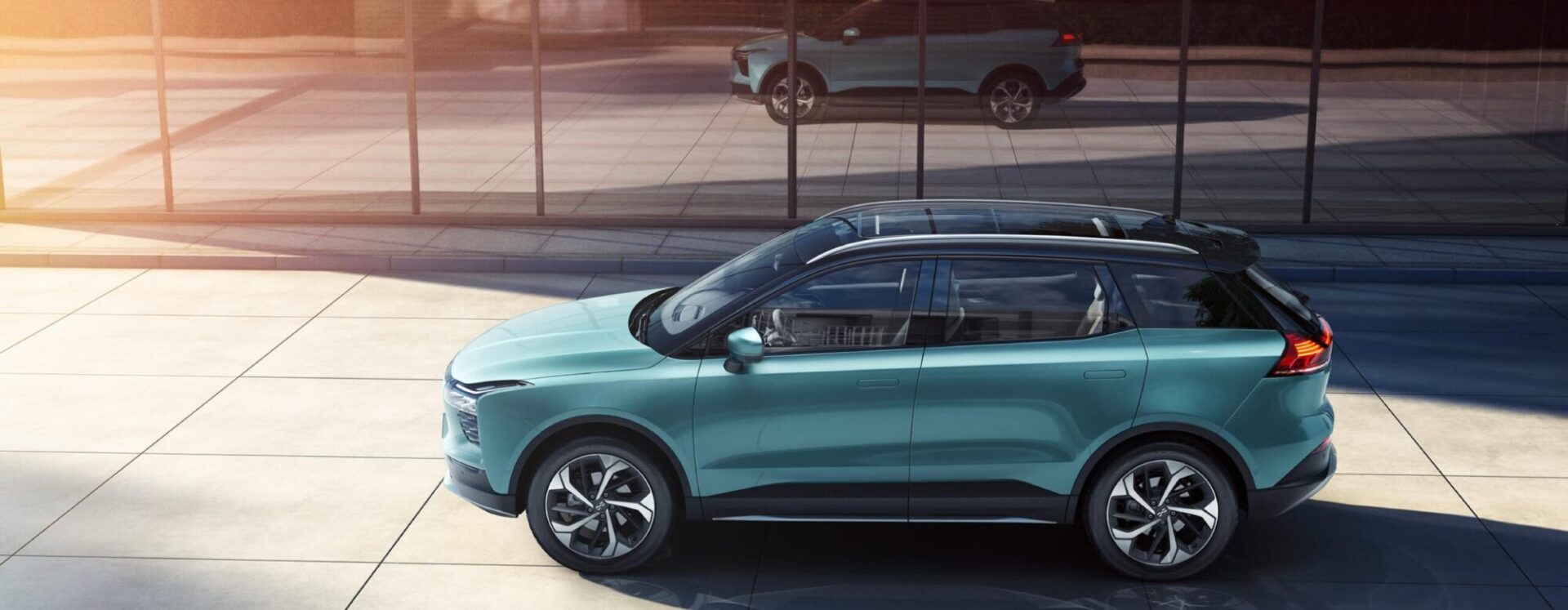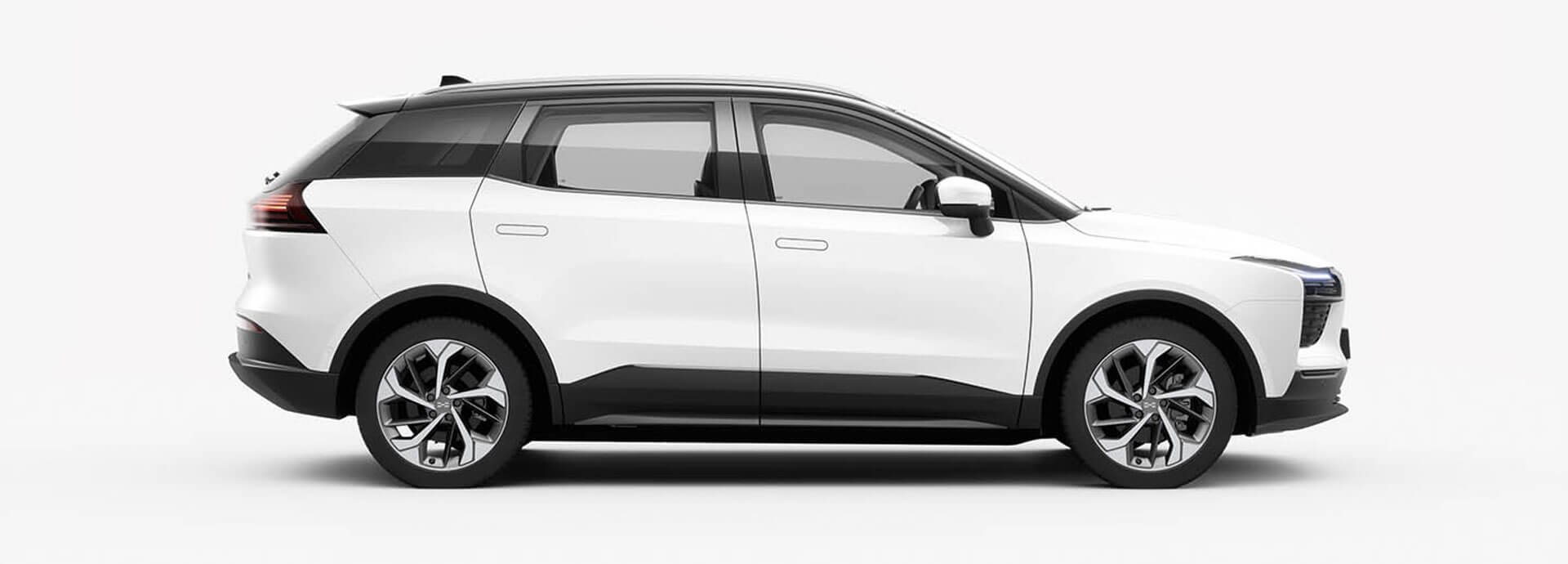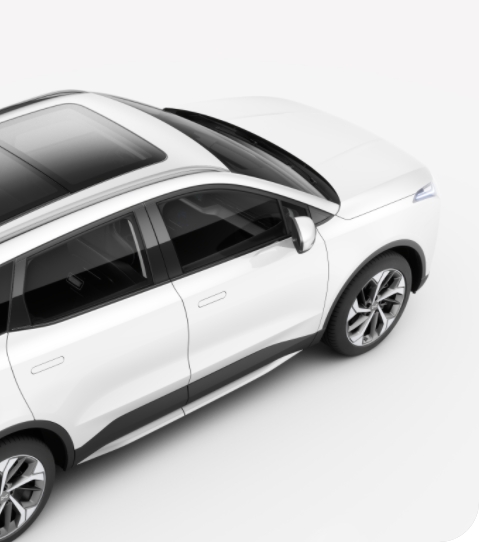
In Europe, customer service (including technical support) is provided at national level by a network of established specialists. These partners undergo ongoing training and development on the U5, allowing them to provide you with exemplary service. Here you can find the service recommendation of Aiways Switzerland.
Has your car broken down? We’re here to help! 24/7.

You enjoy a five-year or 150,000 km manufacturer’s warranty on the U5, depending on what comes first. What’s more, Aiways guarantees a minimum battery capacity of 75% after eight years or 150,000 km. An eight-year manufacturer’s warranty – or a warranty on the first 150,000 km – applies in respect of the motor and the electronic control unit as key components, depending on what comes first in each case.
The bodywork is even subject to a corrosion protection warranty of ten years, with no mileage limit.
You will have a warranty of two years on Aiways genuine spare parts.
The Aiways U5 boasts an NEDC range of up to 503 km (WLTP: 400–410 km). The WLTP test standard was introduced to provide a more realistic consumption profile. In everyday conditions, the actual range of the vehicle may vary. This depends on various factors, particularly the outside temperature, the route profile, the driver’s personal driving style, the use of other devices within the vehicle (heating/air conditioning) and thermal preconditioning. For electric vehicles, the differences between the various operating modes are considerable. Therefore, the range may be significantly higher on purely urban routes or on country roads, whereas it may be below the average WLTP range on faster motorway journeys.
With a range of up to 410 km (WLTP), the Aiways U5 is extremely well equipped for spontaneous long-distance journeys. When planning your next long trip, use an app such as A Better Route Planner and enter your desired route (e.g. from Amsterdam to Berlin). Within just a few seconds, the app will calculate the optimum route, indicate charging stations and work out the charging time required. You can then stretch your legs whilst the vehicle is charging. Over time, you will learn how to plan your charging stops in line with your requirements.
Please refer to the PDF model comparison list for the technical specifications of the U5. You can download this document via the ‘Find out more’ link in the U5 configurator.
Conveniently charge your Aiways U5 via your household electricity supply. Whether at home, in the office or on holiday, you can charge your Aiways U5 at all standard 230V household power sockets thanks to the ICCB charging cable, which comes as standard. The vehicle can usually be charged overnight if it has not been fully drained.
An even more convenient option is charging your Aiways U5 overnight with a wall unit, with up to 6.6 kW. Spring 2021, a free upgrade will be released that allows you to warm up your U5 at the charging station.
Simply connect your vehicle to the wall unit using the type 2 charging cable for AC charging stations (cable also supplied as standard). This cable also allows you to use a wide range of public charging stations. Depending on the electricity provider, the power available at public charging stations, and therefore charging times, may vary. Here too, your U5 will normally be fully charged the next morning.
The Aiways U5 is also perfectly equipped for long-distance journeys. In terms of public charging, Aiways provides its customers with access to a network of almost 500,000 charging stations worldwide. This network also includes numerous high-power (DC) charging stations on major transport routes across Europe. With maximum charging power of up to 90 kW, the U5 can, for example, be charged up from 20% to 80% in 35 minutes at these stations, thus restoring its energy to sufficient levels. As such, charging breaks on long-distance journeys in your Aiways U5 are even shorter than a coffee break, which you should take anyway.
The main difference between alternating current (AC) charging, direct current (DC) charging and high-power charging (HPC) is the time it takes to charge the vehicle. Depending on the cable and charging station, charging electric vehicles with alternating current (AC) takes longer, whereas direct current (DC) is much faster.
Ultra fast direct current (DC) charging is possible at a high-power charging (HPC) station. Here, for example, the battery of an Aiways U5 can – with maximum charging power of up to 90 kW – be charged up from 20% to 80% in approx. 35 minutes. The maximum charging power, however, depends on the country-specific infrastructure.
Sign up now to receive first-hand information about Aiways. With our newsletter, you will not miss out on any news and can look forward to event recommendations, special offers and much, much more.


We have sent you an email with an activation link to the email address you provided. Please click on the link in our email to complete your newsletter registration. If you cannot find the email in your inbox, please also check your spam folder.


Herewith I provide my consent that Maxomotive Schweiz AG , Aiways Switzerland is using my E-Mail address to update me with the Aiways Newsletter about products and offers.
Herewith I accept that Maxomotive Schweiz AG, Aiways Switzerland
is sharing my address and phone number with
(together “Social Media Partner”)
for the following reasons:
The Social Media Partner are using my above stated personal data in order to identify third persons, which are statistical similar to me (so called “statistical twins”). In order to do so, the Social Media Partner also use personal data of mine which they possibly already stored and which therefore are not being shared by Aiways with the Social Media Partner (e.g. name, age). These identified statistical twins will then receive advertising of Aiways products and services.
Each Social Media Partner will compare my above stated personal data with their data base in order to check if I am registered at the individual Social Media Partner as user. In case this check is positive, the Social Media Partner will display me no or less Aiways advertising.
I can recall my consent for the future at any time using the sign-out link at the end of each newsletter or by sending a notification to
Maxomotive Schweiz AG, Aiways Switzerland, Brandbachstrasse 6, 8305 Dietlikon (info@aiways-switzerland.ch)
Aiways is responsible for my above stated personal data up until they are being transferred to the Social Media Partner. In case I recall my consent, Aiways will initiate the deletion of my personal data at the Social Media Partners.
Undetached from a possible recall, I can also assert my affected rights across each Social Media Partner after the DSGVO (right of providing information (Art. 15 DSGVO), right of data portability (art. 20 DSGVO), right of rectification (Art. 16 GSGVO), right of deletion (Art. 17 DSGVO), Right of processing restriction (Art. 18 DSGVO), right to object (Art. 21 DSGVO))
(zusammen “Social Media Partner”)
Die Social Media Partner nutzen meine oben genannten personenbezogenen Daten, um Dritte Personen zu ermitteln, die mir statistisch ähnlich sind (sog. “Statistische Zwillinge”). Dazu nutzen die Social Media Partner auch solche personenbezogene Daten von mir, die ihnen ggf. bereits vorliegen und die nicht von Aiways an den jeweiligen Social Media Partner übermittelt wurden (z.B. Name, Alter). Die auf diesem Wege ermittelten Statistischen Zwillinge erhalten dann Werbung über Aiways Produkte.
Die jeweiligen Social Media Partner gleichen meine oben genannten personenbezogenen Daten mit ihren Datenbanken ab, um zu überprüfen, ob ich beim jeweiligen Social Media Partner als Nutzer registriert bin. Ergibt der Abgleich, dass ich als Nutzer registriert bin, wird mir von diesem Social Media Partner keine oder weniger Aiways Werbung angezeigt.
Combined electricity consumption1 in kWh/100 km: 13.8 (NEDC); 17.0–16.6 (WLTP)
Combined CO2 emissions1: 0 g/km
Efficiency class: A+

¹The stated figures have been calculated using the legally required measurement techniques. Previously, consumption figures were measured using the New European Driving Cycle (NEDC). Since 1 September 2017, certain new vehicles have been given type approval in accordance with the Worldwide Harmonised Light Vehicles Test Procedure, WLTP). Compared with NEDC, WLTP represents a more realistic procedure for measuring electricity consumption. As of 1 September 2018, NEDC is gradually being replaced by WLTP. The electricity consumption figures measured using WLTP are, in many cases, higher than those measured using NEDC, which is attributable to the more realistic test conditions associated with WLTP.
We are currently legally obliged to state the NEDC figures. In respect of new vehicles that have already been granted type approval in accordance with WLTP, the NEDC figures are derived from the WLTP figures. Until it becomes mandatory, the statement of the WLTP figures is made voluntarily. NECD values, which are given as a range, do not form part of the offer, as they do not relate to a specific vehicle. They serve solely to facilitate comparison between different vehicle types. Aerodynamics, weight and rolling resistance may change due to optional extras and accessories and have the ability – just like personal driving style and weather/traffic conditions – to influence the electricity consumption and on-road performance of a vehicle. In terms of electric vehicles, in particular, higher or even significantly lower consumption figures may be recorded in real-life conditions.
For more information on the official electricity consumption of new passenger cars, please refer to the Guide on the Fuel Economy, CO2 Emissions and Power Consumption of New Passenger Car Models, which is available free of charge at all outlets, from DAT Deutsche Automobil Treuhand GmbH, Hellmuth-Hirth-Str. 1, 73760 Ostfildern, Germany, or at www.datgroup.com